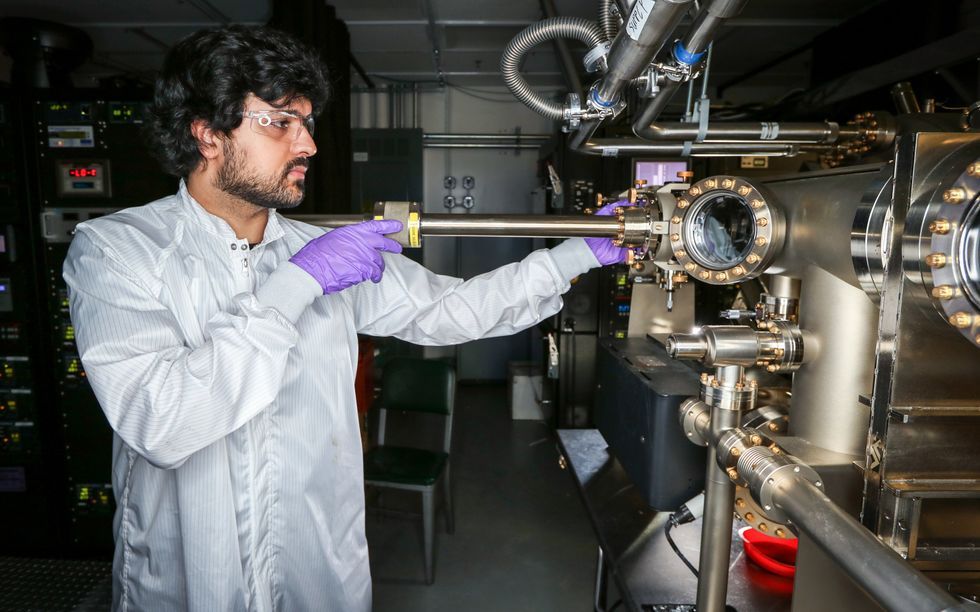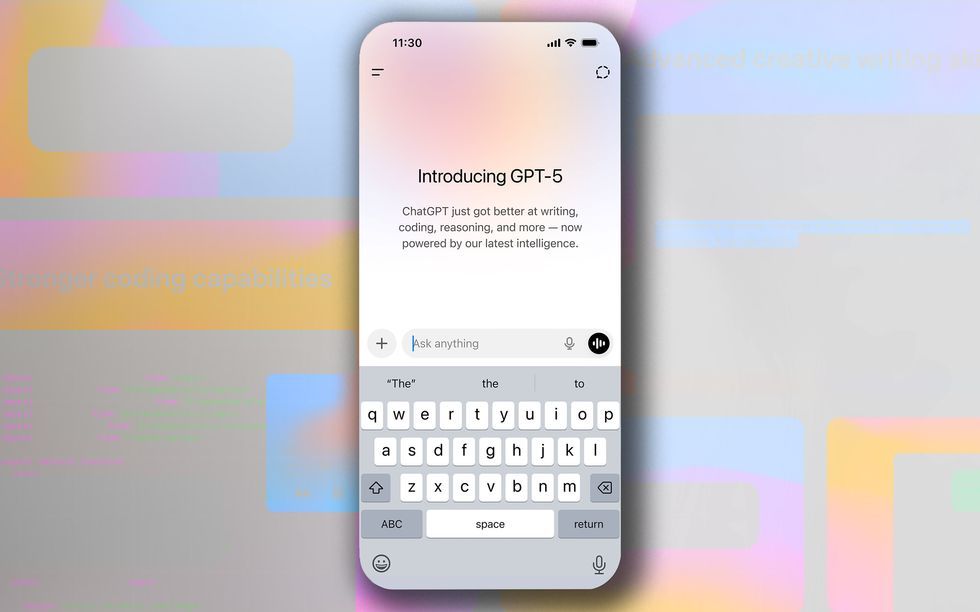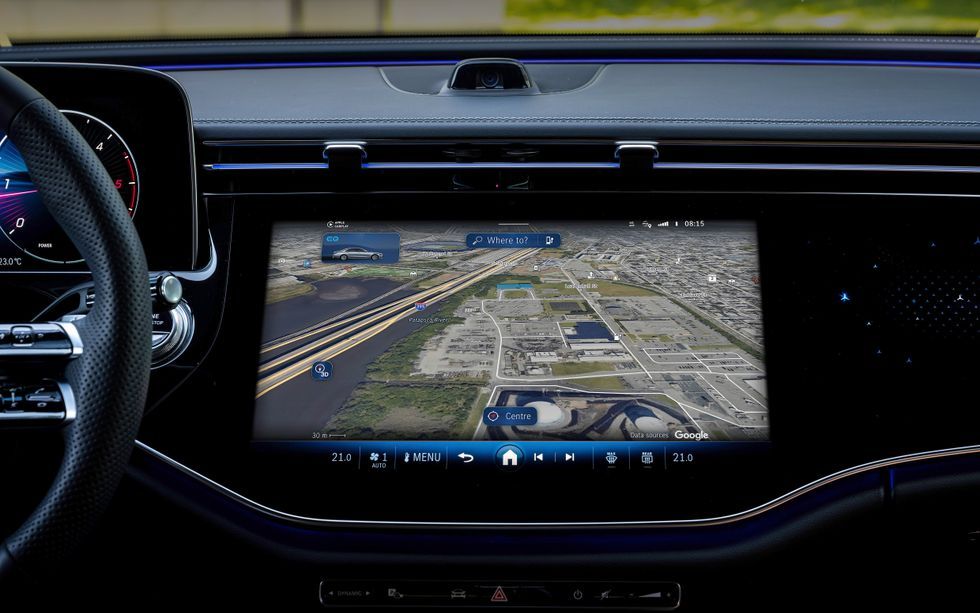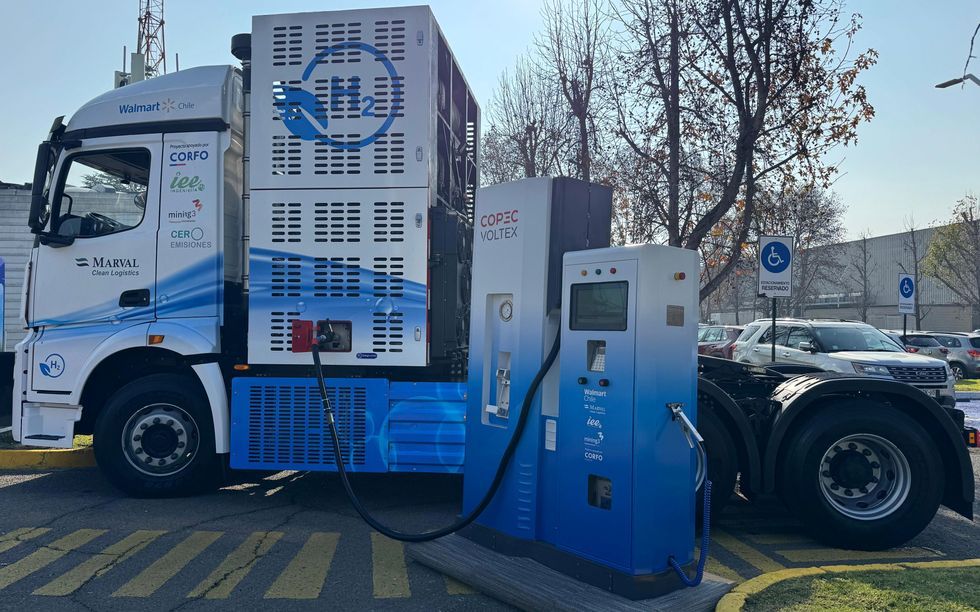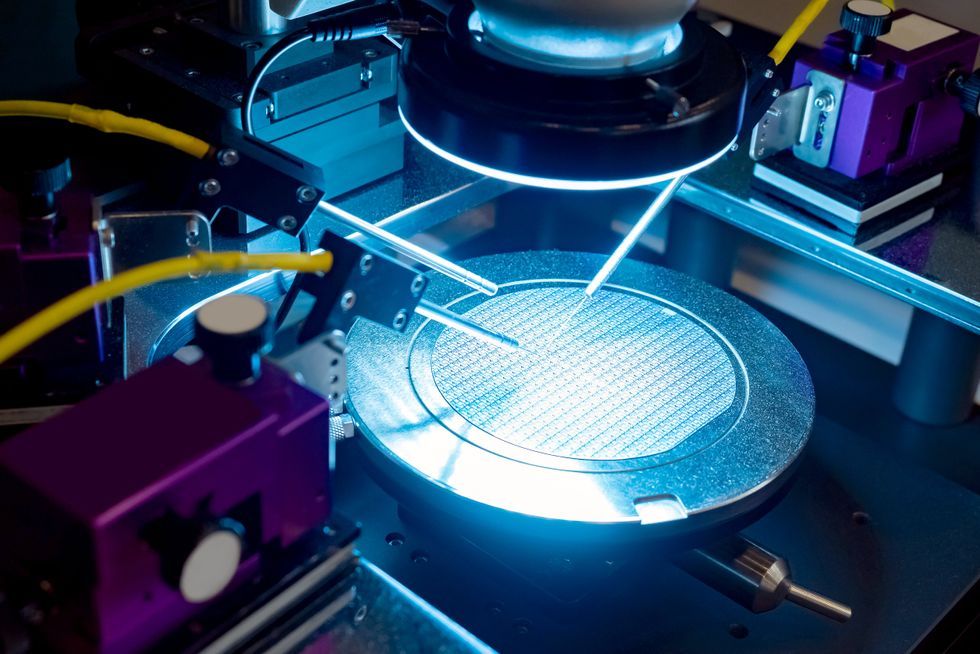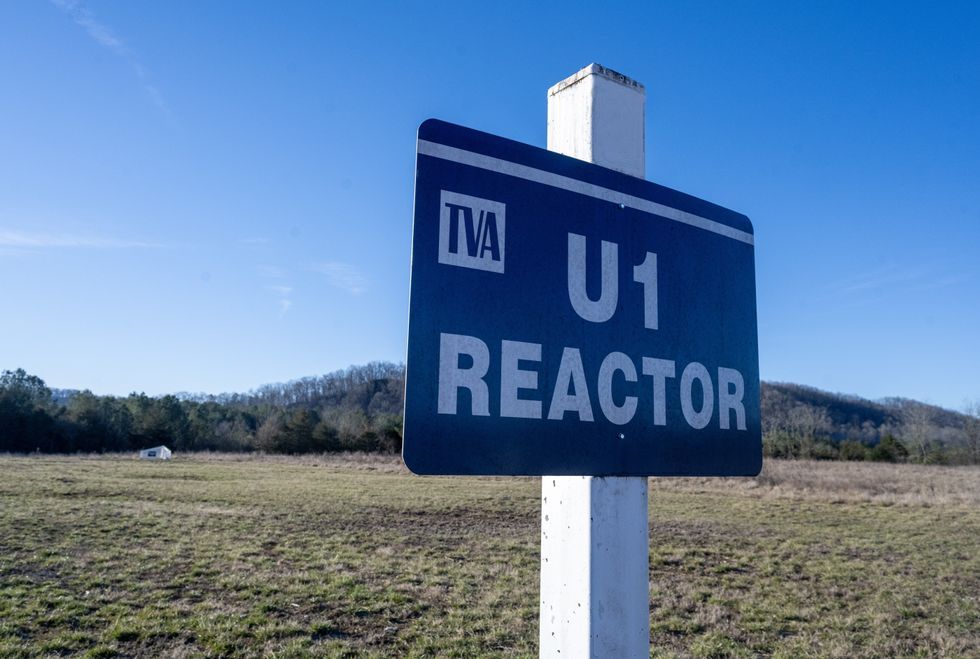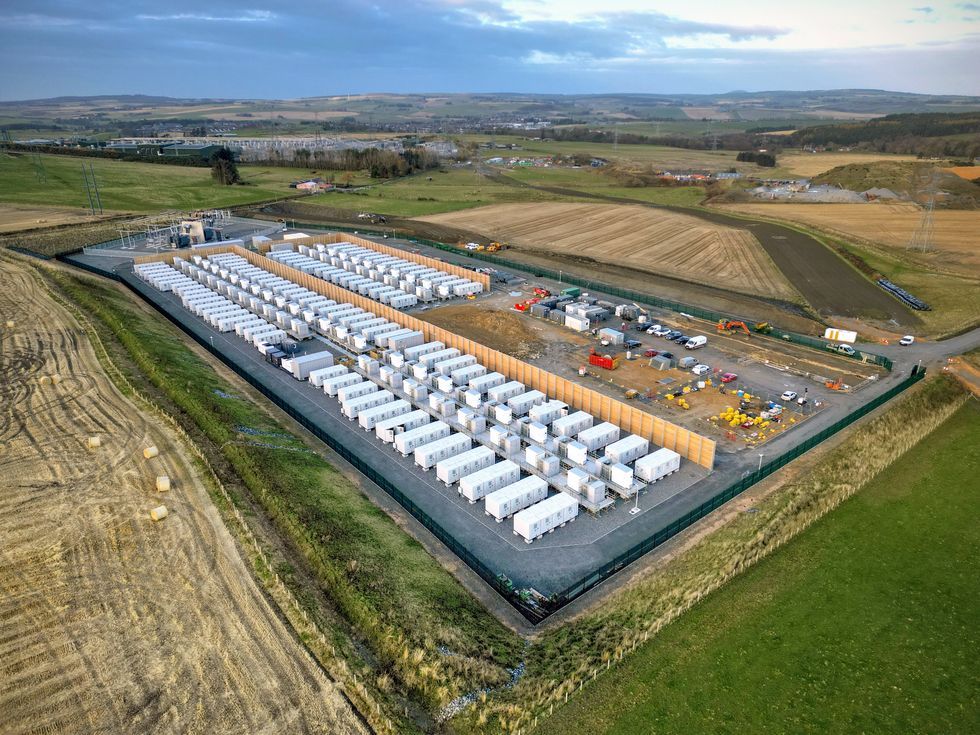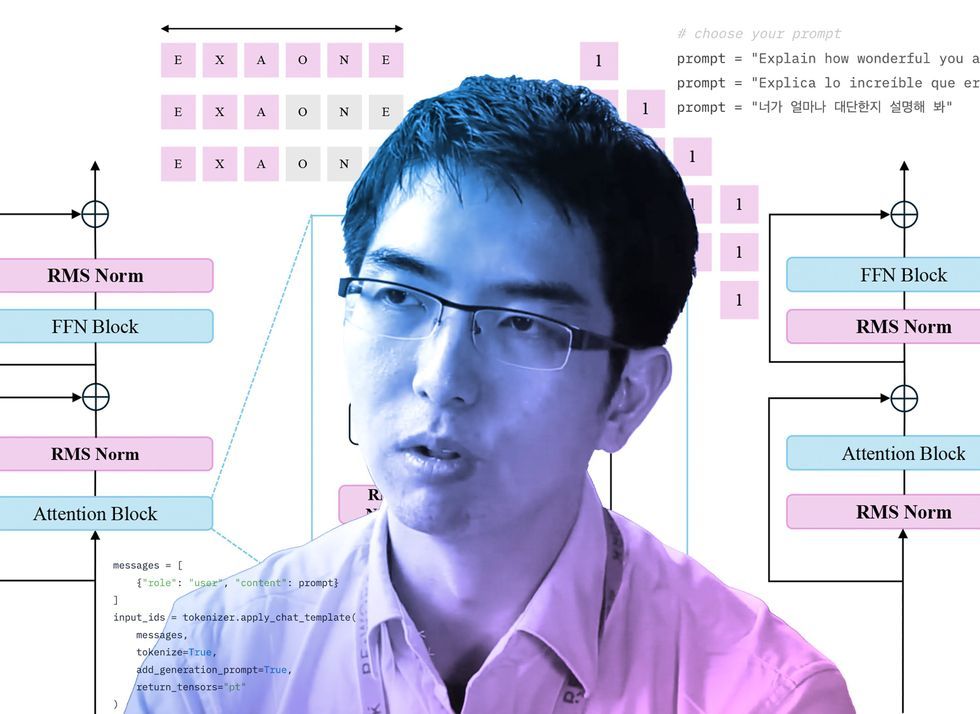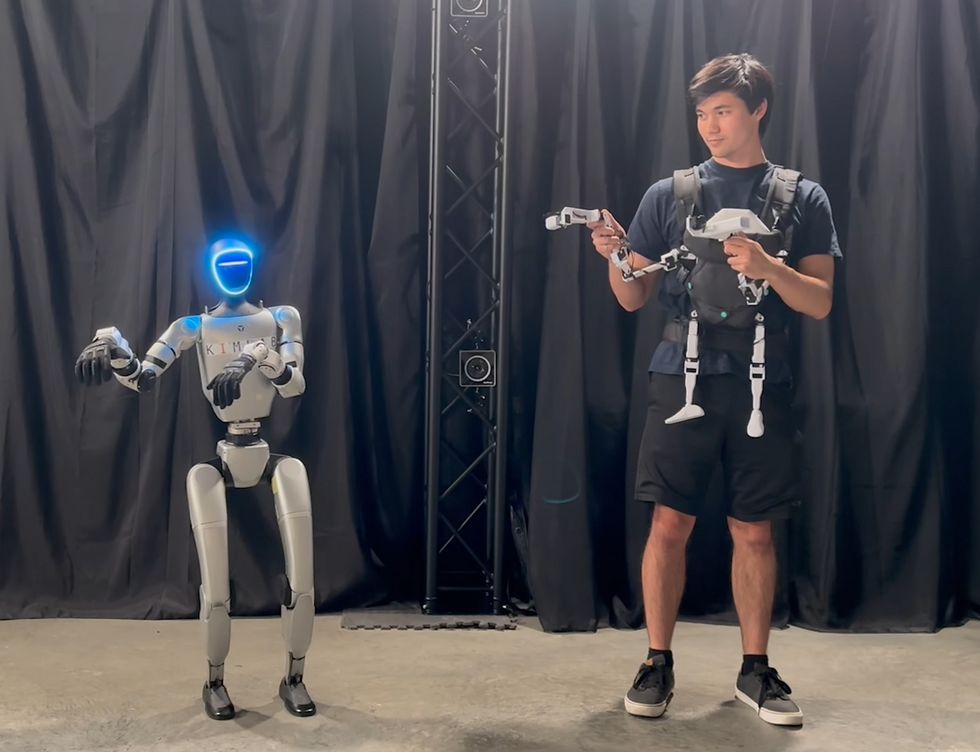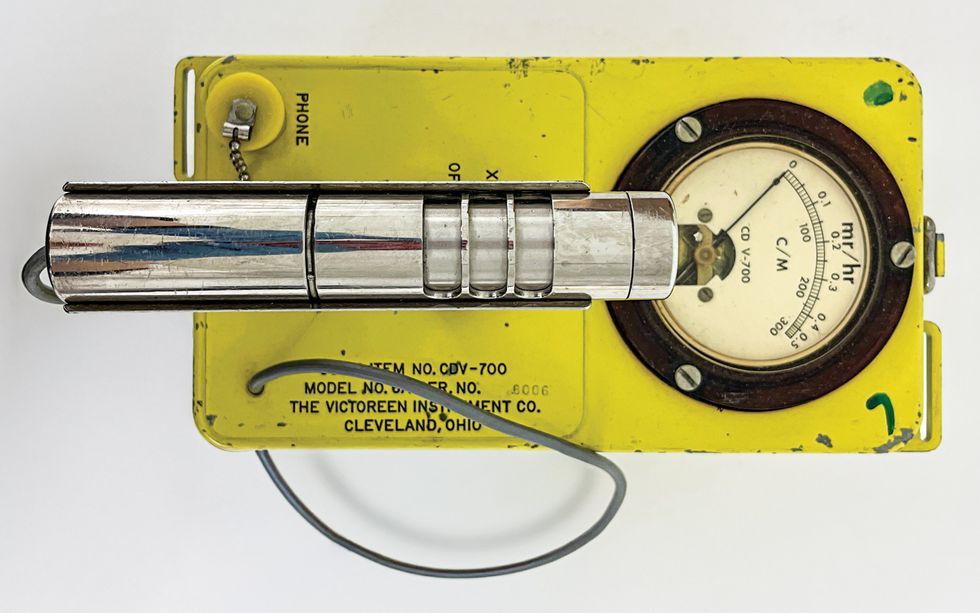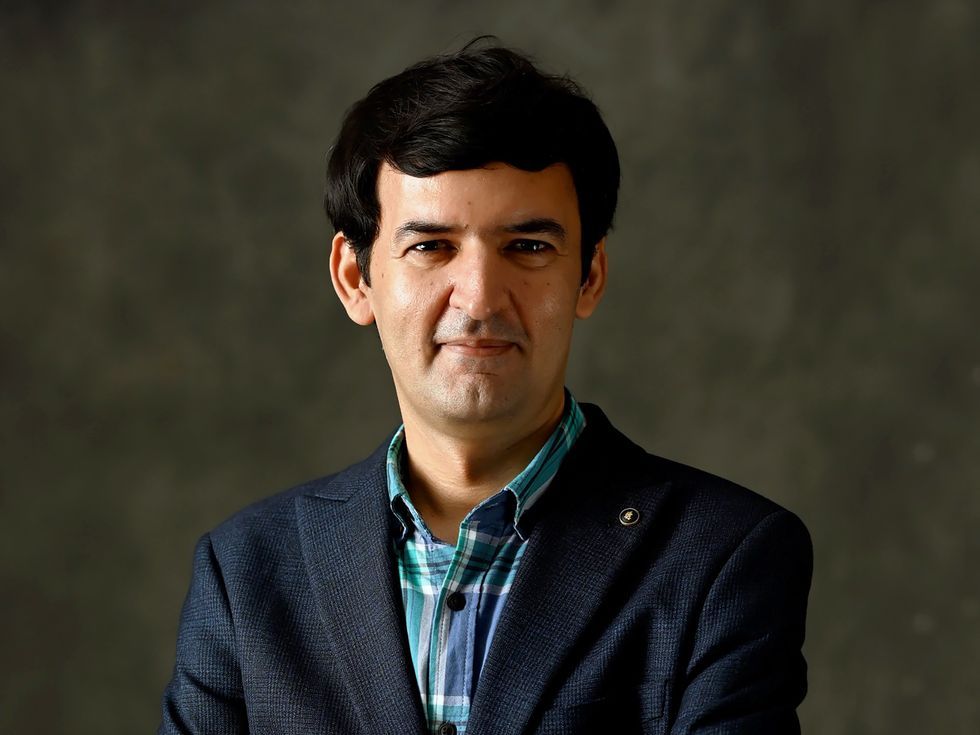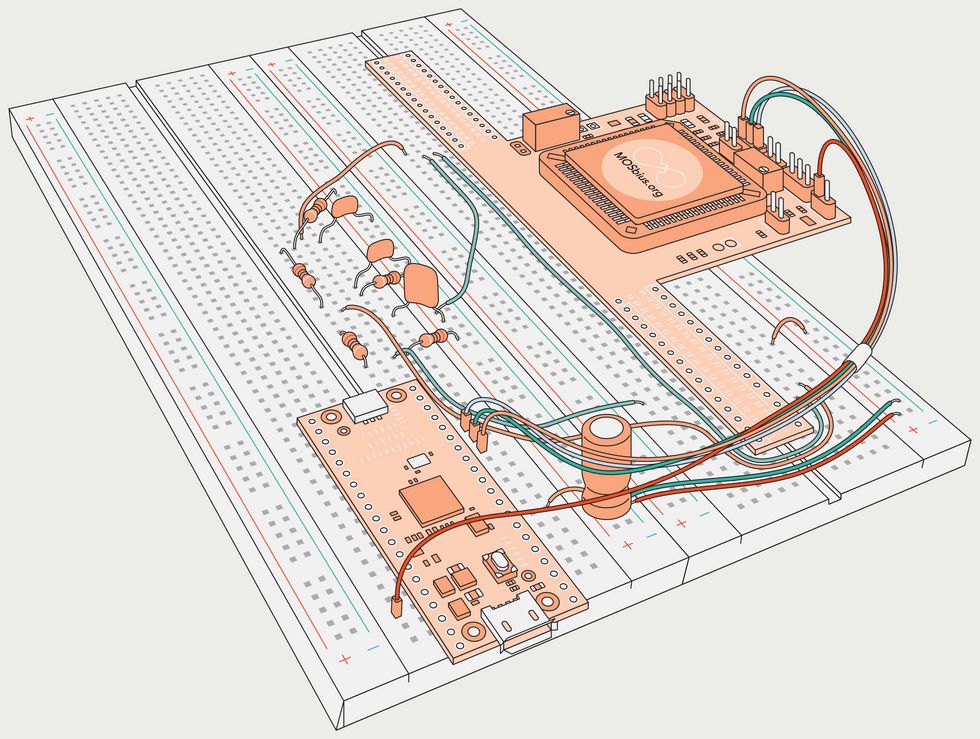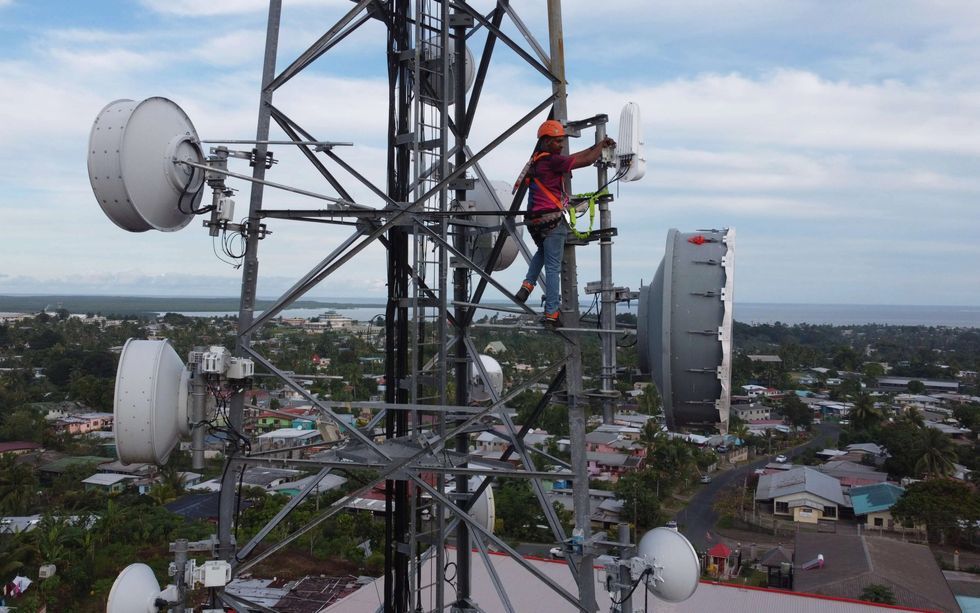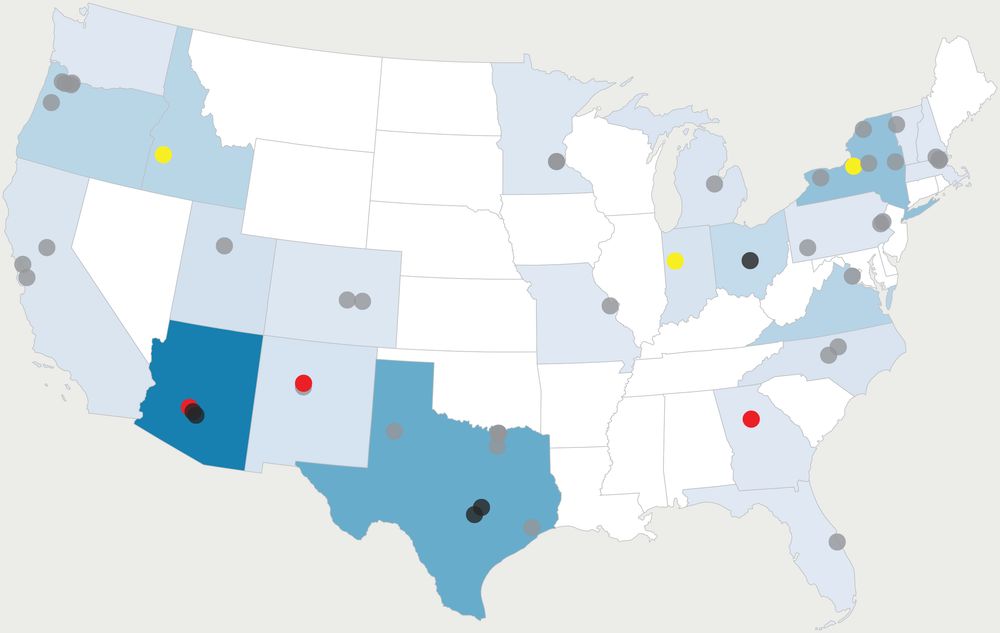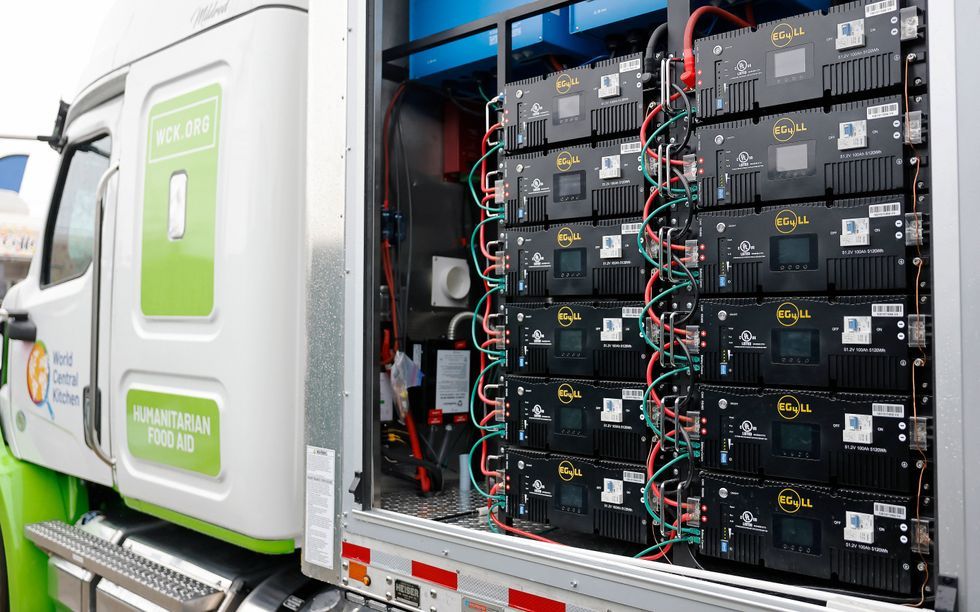
In Nigeria, Why Isn’t Broadband Everywhere?
**Under the shade of** a cocoa tree outside the hamlet of Atan, near Ibadan, Nigeria, Bolaji Adeniyi holds court in a tie-dyed T-shirt. “In Nigeria we see farms as father’s work,” he says. Adeniyi’s father taught him to farm with a hoe and a machete, which he calls a cutlass. These days, he says, farming in Nigeria can look quite different, depending on whether the farmer has access to the Internet or not.
Not far away, farmers are using drones to map their plots and calculate their fertilizer inputs. Elsewhere, farmers can swipe through security camera footage of their fields on their mobile phones. That saves them from having to patrol the farm’s perimeter and potentially dangerous confrontations with thieves. To be able to do those things, Adeniyi notes, the farmers need broadband access, at least some of the time. “Reliable broadband in Atan would attract international cocoa dealers and enable access to agricultural extension agents, which would aid farmers,” he says.
Adeniyi has a degree in sociology and in addition to growing cocoa trees, works as a criminologist and statistician. When he’s in Ibadan, a city of 4 million that’s southeast of Atan, he uses a laptop and has good enough Internet. But at his farm in Atan, he carries a candy-bar mobile phone and must trek to one of a few spots around the settlement if he wants better odds of getting a signal. “At times,” Adeniyi says, “it’s like wind bringing the signal.”
**RELATED:**Surf Africa: What to Do With a Shiny New Fiber-Optic Undersea Cable
On paper, Nigeria has plenty of broadband capacity. Eight undersea cables bring about 380 terabits of capacity to Nigeria’s coast. The first undersea cable to arrive, SAT-3/WASC, made land in 2001; the most recent is 2Africa, which landed in 2024. They’re among the 75 cables that now connect coastal Africa to the rest of the world. Nigeria’s big telecom operators continue to build long-distance, high-capacity fiber-optic networks from the cables to the important commercial nodes in the cities. But distribution to the urban peripheries and to rural places such as Atan is still incomplete.
###
Incomplete is an understatement: Less than half of the country’s 237 million people have regular access to broadband, with that access mostly happening through mobile devices rather than more stable fixed connections. Nigeria’s Federal Ministry of Communications, Innovation, and Digital Economy has set a goal to almost double the length of the country’s fiber-optic backbone and for broadband to reach 70 percent of the population by the end of this year. But the ministry also claimed in 2024 that it would connect Nigeria’s 774 local governments to the broadband backbone; as of February 2025, it had reached only 51. The broadband buildout has been seriously hampered by Nigeria’s unreliable power grid. Beyond the mere inconvenience of frequent outages, the poor quality of electricity drives up costs for operators and customers alike.
During a visit to Nigeria earlier this year, I talked to dozens of people about broadband’s impact on their lives. For more than two decades, the country has possessed an incredible portal to the world, and so I had hoped to hear stories of transformation. In some cases, I did. But that experience was far from uniform, with much work left to do.
## Where Nigeria’s broadband has arrived
Broadband is enabling all kinds of changes in Nigeria, Africa’s most populous country. All eight undersea cables make landfall in Lagos, the cultural, commercial, and one-time federal capital of Nigeria, and one of the cables also lands near Port Harcourt to the southeast. The country’s fiber-optic backbones—which in early 2025 consisted of about 50,000 to 60,000 kilometers of fiber-optic cable—connect the undersea links to the cities.
From 2008 to 2025, Nigeria has experienced extraordinary growth in both the number of undersea high-speed cables landing on its shores and the buildout of broadband networks, especially in its cities. Still, fixed-line broadband is unaffordable for most Nigerians, and about half of the population has no access. Africa Bandwidth Maps
“Virtually everywhere in Nigeria is covered with long-haul cables,” says Abdullateef Aliyu, general manager for projects at Phase3 Telecom, which is responsible for perhaps 10,000 km of those cables. Most Nigerian cities have at least one fiber-optic backbone, and the biggest have more than half a dozen.
The result is that the most densely populated areas enjoy competing Internet service providers offering fiber optics or satellite to the home. Connecting the other half of Nigerians, the rural majority, will become profitable someday, says Stanley Jegede, executive chairman of Phase3 Telecom, but it had better be “patient money.”
A Phase3 Telecom worker [left] installs fiber-optic cables on power poles in Abuja, Nigeria. Abdullateef Aliyu [right], Phase3’s general manager for projects, says the country is using only around 25 percent of the capacity of its undersea cables.Andrew Esiebo
Unsurprisingly, the customers that got broadband first were those with impatient money, those that could offer the best return to the telecom firms: the oil companies that dominate Nigerian exports, the banks that have since boomed, the Nollywood studios that compete with Bollywood and Hollywood.
The impatient money showed up first in flash Victoria Island in Lagos. If you want to serve international customers or do high-speed stock trading, you need a reliable link to the outside world, and in Nigeria that means Victoria Island.
Here, the fiber-optic cables rise like thick vines in gray rooms on the ground floors or in the basements of the office towers that house the banks powering Nigerian finance. Between the towers, shopping plazas host foreign fast-food franchises and cafés.
From their perch near the submarine network, the banks realized that mobile broadband would allow them to reach exponentially more customers, especially once those customers could take advantage of Nigeria’s instant-payment system, launched by the central bank in 2011. Using mobile payments, bank apps, and other financial apps, Nigerians can conduct convenient cellphone transactions for anything from street food to airplane tickets. The central bank’s platform was such a success that until recently, it handled more money than its U.S. equivalents.
RELATED: As Nigeria’s Cashless Transition Falters, POS Operators Thrive
Just as important as convenience is trust. Nigerians trust each other so little that a university guesthouse I stayed in had its name printed on the wall-mounted air conditioner units to discourage theft. But Nigerians trust mobile payments. Uber drivers think nothing of sharing their bank account numbers with passengers, so that the passengers can pay their fares via instant payment. A Nigerian engineer explained to me that many people prefer that to disclosing their bank-card information on the Uber platform.
Broadband has also brought change to Nollywood, Nigeria’s vast film industry, second only to India’s Bollywood in terms of worldwide film output. On the one hand, broadband transformed Nollywood’s distribution model from easily pirated DVDs to paywalled streaming platforms. On the other hand, streaming platforms made it easier for Nigerians to access foreign video content, cutting into local producers’ market share. The platforms also empowered performers and other content producers to bypass the traditional Nollywood gatekeepers. Instead, content creators can publish straight to YouTube, which will pay them if they achieve enough views.
Emmanuella Njoku, a computer science major at the University of the People, an online school, is interested in a graphics or product-design job when she graduates. But a broadband-enabled side hustle is starting to look like a viable alternative, she told me in January. She edits Japanese anime recaps and publishes them to her YouTube channel. “I have 49,000 followers right now, but I need 100,000 followers and 10 million views in the last 90 days to monetize,” Njoku said.
Computer science student Emmanuella Njoku has found a broadband-enabled side gig: creating YouTube videos.Andrew Esiebo
A friend of hers had recently crossed the 100,000-follower threshold with YouTube videos focused on visits to high-end restaurants around Lagos. The friend expected restaurants and other companies to start paying her for visits, in addition to collecting her tiny cut of YouTube’s ad revenue.
Both women said they’d prefer jobs that allow them to telecommute, a more realistic prospect in Nigeria in the last few years thanks to the availability of broadband. More companies are open to remote work and hybrid work, says telecom analyst Fola Odufuwa. That’s especially true in Lagos, where fuel shortages and world-class traffic jams encourage people to minimize the number of days they commute.
For academics, broadband can make it easier to collaborate on research. In 2004, __IEEE Spectrum__ reported on a Federal University of Technology researcher in Owerri carrying handwritten messages to a contact, who had a computer with an Internet connection and would type up the messages and send them as emails. Today researchers at the Federal University of Technology campus in Minna collaborate virtually with colleagues in Europe on an Internet of Things demonstration project. While some events take place in person, the collaborators also exchange emails, meet by videoconference, and work on joint publications via the Internet.
## Why broadband rollout in Nigeria has been so slow
The undersea cables and fiber-optic backbones have also been a boon for Nigeria’s telecom industry, which now accounts for 14 percent of GDP, third only to agriculture (23 percent) and international trade (15 percent).
Computer Village in Lagos is Nigeria’s main hub for electronics.Andrew Esiebo
Alcatel (now part of Nokia) connected SAT-3 to Nigeria’s main switching station in December 2001, just a couple of years into the first stable democratic government since independence in 1960. The state-run telephone monopoly, Nigerian Telecommunications (Nitel), was mainly responsible for the rollout of SAT-3 within the country. Less than 1 percent of the 130 million Nigerians had phone lines in 2002, so the government established a second carrier, Globacom, to try to accelerate competition in the telecom market.
But a mixture of mismanagement and wider difficulties contributed to the sluggish spread of broadband, as __Spectrum__ reported in 2004. Broadband access has soared since then, and yet Aliyu of Phase3 Telecom estimates that the country is using only around 25 percent of the total capacity of its undersea cables.
Nigeria’s unreliable electricity drives up telecom prices, making it harder for poor Nigerians to afford broadband. The spotty power grid means that standard telecom equipment needs backup power. But battery or diesel-powered cellphone towers attract theft, which in turn undermines network reliability. Power outages occur with such frequency that even when the lights and air conditioning go out during in-person meetings, it arouses no comment.
RELATED: Nigerians Look to Get Out From Under the Nation’s Grid
A visit to Nitel’s former headquarters, a 32-story skyscraper with antennas and a lighthouse perched on top, is revealing. Telecom consultant Jubril Adesina leads the way into the once-grand entrance, where armed guards wave visitors past inoperative turnstiles.
NTEL’s chief information officer, Anthony Adegbola, inspects broadband equipment at the company’s data center in Lagos, which still houses obsolete coaxial cable boxes [top]. Andrew Esiebo
Our destination is NTEL, a private firm that inherited much of Nitel’s mantle, on the 17th floor. Adesina is explaining how a recent mobile tariff increase will improve mobile penetration, but when we reach the elevator lobby, he stops talking. The power is out again. His eyes turn to the unlit indicator alongside the shut elevators, then he looks at the stairs and whispers, “We can’t.”
Instead, Adesina walks around to the back of the building and greets NTEL chief information officer Anthony Adegbola, who along with a small team of engineers and technicians guards another relic of Nigeria’s telecom past. We walk along a hallway past rooms with empty desks and old desktop computers and down a short staircase. Cables snake along the ceiling and above a door. Beyond the door, the men point proudly to SAT-3, Nigeria’s first high-speed undersea cable, rising alongside an electrical grounding cable from the tiled floor. Server racks house obsolete coaxial cable boxes, displayed as if in a museum, next to today’s fiber-optic boxes. Since the last time __Spectrum__ visited, engineers have expanded SAT-3’s capacity from 120 gigabits per second to 1.4 terabits per second, Adegbola says, thanks to improvements in data transmission via different wavelengths, and better receiving boxes in the room. NTEL backs up the grid electricity with a battery bank and two generators.
## In Nigeria, mobile broadband is popular
What is often missing in Nigeria is the local connection, the last few kilometers leading to customers. In the developed world, that connection works like this: Internet service providers (ISPs) plug into the nearest backbone via one of several technologies and deliver a small slice of bandwidth to their business and residential customers. A switching station called a point of presence (PoP) serves as an on- and off-ramp between the backbone and the ISPs. The ISPs are responsible for installing the fiber-optic cables that lead to their customers; they may also use microwave antennas to beam a signal to customers.
But in Nigeria, fiber-optic ISPs have been sluggish to capture market share. Of the country’s 300,000 or so fixed-line broadband subscribers—which reach just 0.001 percent of Nigerians—about a third are served by the leading ISP, Spectranet. By comparison, the average fixed broadband penetration rate among countries in the Organisation for Economic Co-operation and Development (OECD) was 42.5 percent in 2023, led by South Korea, with 89.6 percent penetration.
Starlink’s satellite-based service, introduced in Nigeria in 2023, is now the second biggest broadband ISP, with about 60,000 subscribers. That’s almost triple the third biggest ISP, FiberOne. Satellite is outcompeting fiber because it’s more reliable and has higher speeds and tolerable latency, even though it costs more. A Starlink satellite terminal can serve up to 200 subscribers and retails for about US $200 plus a $37 monthly fee. A comparable fiber-to-the-home plan in Abuja, where the median monthly take-home pay is $280, costs about $19 a month.
In Lagos’s Computer Village, you can buy or sell a mobile phone or computer, or get yours repaired.Andrew Esiebo
Meanwhile, Nigeria has 142 million cellular subscriptions, and so most Internet users access the Internet wirelessly, via a mobile network. In other words, Nigeria’s mobile market is nearly 500 times as big as the market for fixed broadband. The mobile networks also rely on the fiber-optic backbones, but instead of using PoP gateways, they link to cellular base stations, each of which can reach up to thousands of mobile devices but may not offer ideal quality of service.
Mobile Internet is a good thing for people who can afford it, which is most Nigerians, according to the International Telecommunication Union. The cost of fixed-line broadband is still around five times as much, which explains why its market share is so tiny. But mobile Internet isn’t enough to run many businesses, nor do mobile network operators guarantee network speeds or low latency, which are crucial factors for high-frequency trading, telemedicine, and e-commerce, and for white-collar jobs requiring streaming video calls.
## Nigeria is 129th in the world in Internet speeds
Internet speeds across Nigeria vary, but broadband tester Ookla’s spring 2025 median for fixed broadband was 28 megabits per second for downloads and 15 Mb/s for uploads, with latency of 25 milliseconds. That puts Nigeria 129th in the world for fixed broadband. In May, Starlink delivered download speeds between 44 and 50 Mb/s, uploads of around 12 Mb/s, and latency of around 61 ms. The top country, Singapore, averaged 393 Mb/s down and 286 Mb/s up, with 4 ms latency. And those numbers for Nigeria don’t capture the effect of unpredictable electricity cuts.
Steve A. Adeshina, a computer engineering professor and machine-vision expert at Nile University, in the capital city of Abuja, says he routinely runs up against the limits of Nigeria’s broadband network. That’s why he keeps two personal cellular modems on his desk. His university contracts with several Internet providers, but the broadband in his lab is still intermittent. For machine-vision research, with its huge datasets, failing to upload data stored on his local machine to the more powerful cloud processor where he runs his experiments means failing to work. “We have optical fiber, but we are not getting value for money,” Adeshina says. If he wakes up to a failed overnight data upload, he has to start it all over again.
RELATED: The Engineer Who Secured Nigeria’s Democracy
Fiber-optic cable spills from an open manhole in Lagos. Local gangs may cut the cables or steal components. Andrew Esiebo
There are many causes for the slow Internet, but chief among them are frequent cable cuts—50,000 in 2024, according to the federal government. The problem is so bad that in February, the government established a committee to prevent network blackouts due to cable cuts during road construction, which it blamed for 60 percent of the incidents.
“The challenge is reaching the hinterland,” Aliyu of Phase3 Telecom says, and keeping lines intact once there. To make his point, Aliyu, dressed in a snappy three-piece suit and red tie, drives a company pickup truck from Phase3’s well-appointed offices in a leafy part of Abuja to a nearby ring road. He pulls over in the shade of an overpass and steps onto the dirt shoulder. A concrete manhole cover sits perched along one edge of an open manhole, looking like the lid of a sarcophagus.
Pointing at the hole, Aliyu explains how easy it is for local gangs, called area boys, to steal components or cut the cables, forcing backbone providers and ISPs to strike unofficial security deals with the boys, or the more powerful, shadowy men behind them. Of course, part of the problem is self-inflicted: Sloppy work crews leave manholes open and expose the cables to potential damage from nesting animals or a stray cigarette butt that ignites tumbleweed and melts the cables.
Phase3 and other telecom companies are also contending with the expense of replacing the first generation of fiber-optic cables, now about 20 years old, as well as upgrading PoP hardware to increase capacity. They’re spending money not just to reach new customers, but also to provide competitive service to existing customers.
For mobile operators such as Globacom, there’s the additional challenge of ensuring reliable power for their base stations. They often rely on diesel or gasoline generators to back up grid power, but fuel scarcity, infrastructure theft, and supply chain issues can undermine base station reliability.
## How Nigeria’s offline half lives
The hamlet of Tungan Ashere is 3 km northwest of the major international airport serving Abuja. To get here, you leave the highway and drive past cinder-block huts with traditional reed roofs. The side of the dirt road is adorned with concrete pylons waiting to be strung with power lines but still naked as the day they were installed in 2021. People here farm cassava, watermelon, yam, and corn. Some keep small herds of goats and cattle. To get to market, they can ride on one of a handful of dirt-bike taxis.
In Tungan Ashere, the Internet hub operated by the Centre for Information Technology and Development attracts residents.Andrew Esiebo
When someone in Tungan Ashere wants to make an announcement, they stroll to a prominent tree and ring a green bar of scrap metal wedged at about head height in the tree’s branches. The metal resonates, not quite like a church bell, but it serves a similar purpose. “The bell, it’s to tell everybody to go to sleep, to wake up, if there’s an announcement. It’s an ancient way of communicating,” explains Lukman Aliu, a telecom engineer who drove me here.
The concept of connectivity in the village differs from just a few kilometers away at the airport, where passengers can enjoy free high-speed Wi-Fi in the comfort of a café. Yet the potential benefits of affordable broadband access for people living in places like Tungan Ashere are enormous.
Usman Isah Dandari is trying to meet that need. He is a technical assistant at the Centre for Information Technology and Development (CITAD), a nonprofit based in Kano, Nigeria. Dandari coordinates a handful of community networking projects, including one in Tungan Ashere. Better broadband here would help farmers track market prices, help students complete their homework, and make it easier for farmers and craftspeople to advertise their goods. CITAD uses a mixture of hardware, including Starlink terminals and cellular modems, to offer relatively reliable broadband to areas neglected by commercial operators. The group is also considering using Nigeria’s national satellite operator, NigComSat, and working with the Nigerian Communications Commission to lower the costs.
Usman Isah Dandari [standing] coordinates several projects like the one in Tungan Ashere, to provide affordable broadband access.Andrew Esiebo
A few meters away from the scrap-metal bell in Tungan Ashere is a one-story building painted rust red, topped with a pastel green corrugated metal roof and eight solar panels, which power a computer lab inside. There’s no grid electricity here, but the solar panels are enough to run a CITAD-provided cellular modem, a few desktop computers, and a formidable floor fan some of the time.
Many of the people in the village once lived where the airport is now. The Nigerian government displaced them when it chose the region as the new federal capital territory in 1991. Since then, successive local governments have provided services piecemeal, usually in the runup to elections. The result is a string of communities like Tungan Ashere—10,000 people in all—that still lack running water, paved roads, grid electricity, and reliable Internet. These people may live on the edge of Nigeria’s broadband backbone, but they reap few of its benefits.
## A private undersea cable shows how to do it
Not every undersea cable rollout has been fraught. In 2005, electrical engineer Funke Opeke was working at Verizon Communications in the United States. MTN, an African telecom company, hired her to help it build its submarine cables. Then Nitel hired her to help manage its privatization. There, she saw up close how the organization was failing to get the Internet from SAT-3 into Nigerians’ lives.
Funke Opeke founded MainOne to build Nigeria’s first private undersea fiber-optic cable.George Osodi/Bloomberg/Getty Images
“I don’t think it was a question of capital or return on investment, policy, or interest,” Opeke says. Instead, officials favored suppliers offering kickbacks over those with competent bids.
Seeing an opportunity for a well-managed submarine cable, Opeke approached private investors about developing a cable of their own. The result is the MainOne cable, which arrived in Lagos in 2010 and is operated by the company of the same name. MainOne offered the first private competition to Nitel’s SAT-3 and Globacom’s Glo-1, which began service in 2010. (MTN’s two cables landed in Nigeria in 2011.)
At first, the MainOne cable suffered the same problem as the others—its capacity wasn’t reaching users. “After we built, there was no distribution,” Opeke, who’s now an advisor with MainOne, says. So the company got its own ISP license and began building fiber links into major metro areas—eventually more than 1,200 km in states near its undersea-cable landing site. It ended up offering a more complete service than originally intended, bringing the Internet from overseas, onshore, across Nigeria, and the last kilometers into businesses and homes, and it attracted more than 800 business clients.
MainOne’s success forced the publicly held telecoms and the mobile providers to compete. “The mobile networks were built for voice, and they were not investing fast enough” in data capacity, Opeke says. MainOne did invest, helping to create the broadband capacity needed for Nigeria’s first data centers. It then diversified into data centers, and in 2022 sold its whole business to American data-center giant Equinix.
Other companies, including the major mobile operators, also began building fiber between Nigerian cities, duplicating each other’s infrastructure. The problem is they didn’t offer competitive prices to independent ISPs that wanted to piggyback on those new fiber-optic links, says the telecom analyst Odufuwa.
And neither the public sector nor the private sector is meeting the needs of Nigerians at the bottom of the market, especially in rural communities such as Tungan Ashere and Atan. A crucial first step will be to improve the reliability of the electrical grid, Opeke says, which will help drive down costs for telecom operators and other businesses, and create a virtuous cycle for further growth.
Almost everyone __Spectrum__ interviewed for this story said security is another challenge: If Nigerian states and the federal government could ensure the security of the infrastructure, telecom operators would invest more in expanding their networks. Building telecom infrastructure is well within the reach of Nigerian engineers. “Nigeria doesn’t have a skill problem,” Opeke says. “It has an opportunity problem.”
If the bureaucrats, businesspeople, and engineers can overcome those policy and technical hurdles, the unconnected half of Nigerians stand to gain a lot. Reliable broadband in Atan would draw more young people to agriculture, says the farmer and sociologist Bolaji Adeniyi: “It will provide jobs.” Then, like Adeniyi, maybe those young connected Nigerians will reconsider whether farming is just father’s work—perhaps it could be their future, too.
_Special thanks to IEEE Senior Member John Funso-Adebayo for his assistance with the logistics and reporting for this story._

